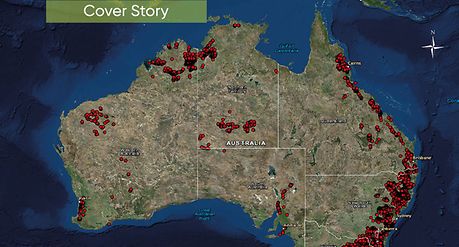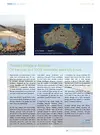Significant energy development - Hongrin-Lémans, Switzerland
Pumped Storage in Australia
On the road to a 100% renewable electricity future
Rapid growth in the deployment of wind parks and commercial solar PV projects has prompted associated growth in pumped storage hydro- power in Australia. Triggered by the on-going energy transition and the associated investments in renewables, especially in South Australia, numerous pumped storage developments around the south and east coasts have been prompted.

Overview of possible off-river pumped storage sites in Australia
Now, new research reveals that by using river-based projects Australia’s pumped storage potential is far greater than had been previously anticipated.
As the only mature and economically viable technology for large scale energy storage, pumped hydro accounts for almost 97% of the total energy storage capacity installed worldwide to date. Ideally, pumped storage power plants are operated in combination with other renewable resources, such as wind and solar PV, allowing balancing of intermittent energy production and stabilizing of the grid. Power is available at short notice when needed, avoiding power shortages. However, concerns over the volatility of renewable energy resources were exacerbated by a major electricity blackout in South Australia in September 2016, potentially impacting on the continued clean energy roll out. In fact, unpredicted high demand and the unavailability of thermal and wind generation caused this energy crisis.
In response to the power outage, the Australian National University (ANU), supported by the Australian Renewable Energy Agency (ARENA) initiated a study for potential sites for off-river pumped storage throughout Australia. Economically viable and with a lifespan of over 50 years, most pumped storage schemes are located on a river or a lake, but there is also a large potential for off-river pumped storage. Headed up by Professor Andrew Blakers, one of Australia’s key energy scientists, the research team found more than 22,000 suitable sites with a total storage capacity of about 67,000 GWh. Identified sites were found close to populated areas and with the possibility of a grid connection.
The generating potential of the sites range from 1 GWh to 300 GWh. Australia is in need of only about 450 GWh of energy storage for a 100% renewable energy electricity system, a transition which is already underway.
Pumped storage along with decentralized smaller battery solutions will certainly play a major role in the future energy storage concept, bringing Australia closer to its goal of a 100% renewable energy future.
Author: Stefan Cambridge



